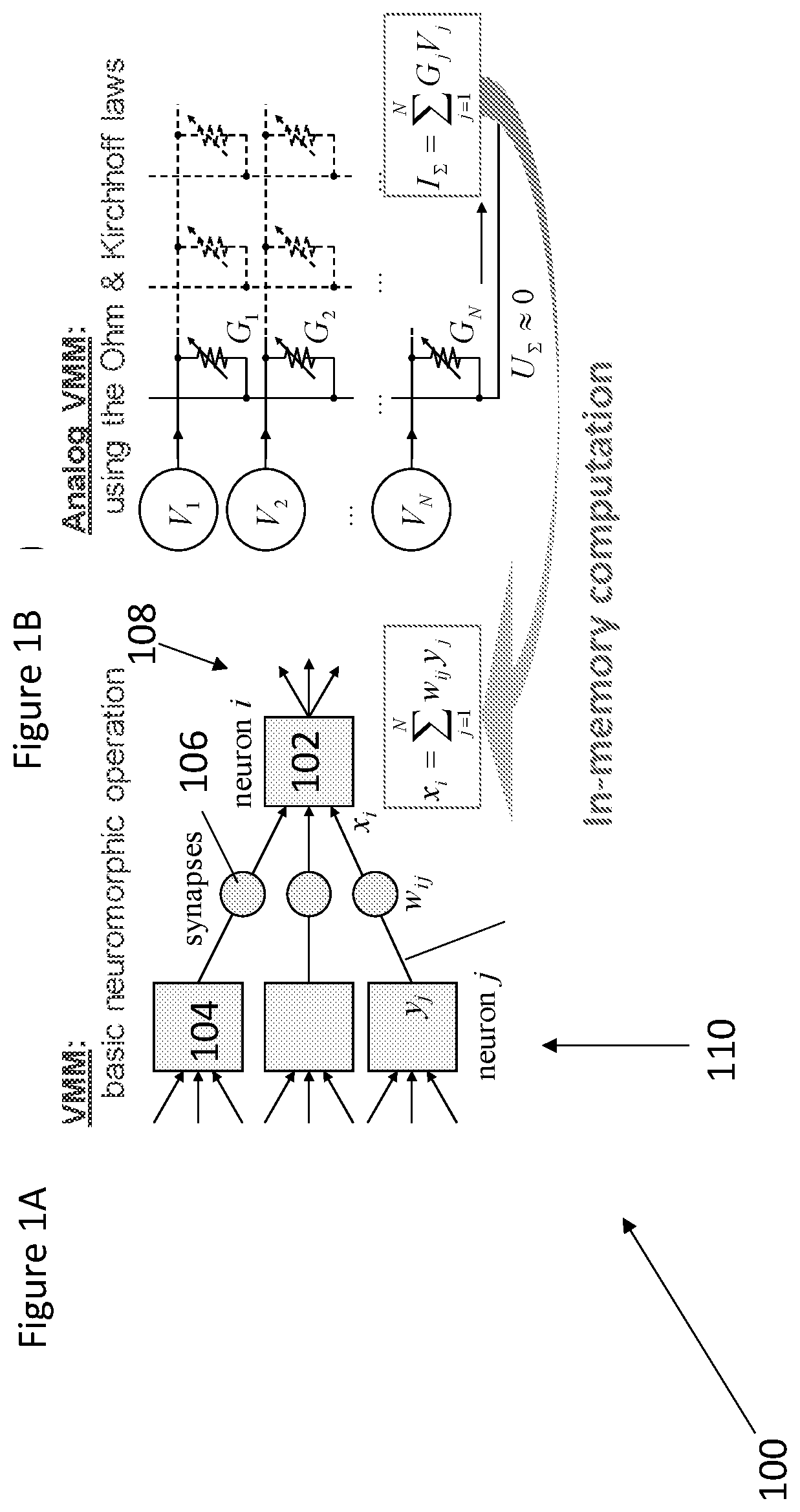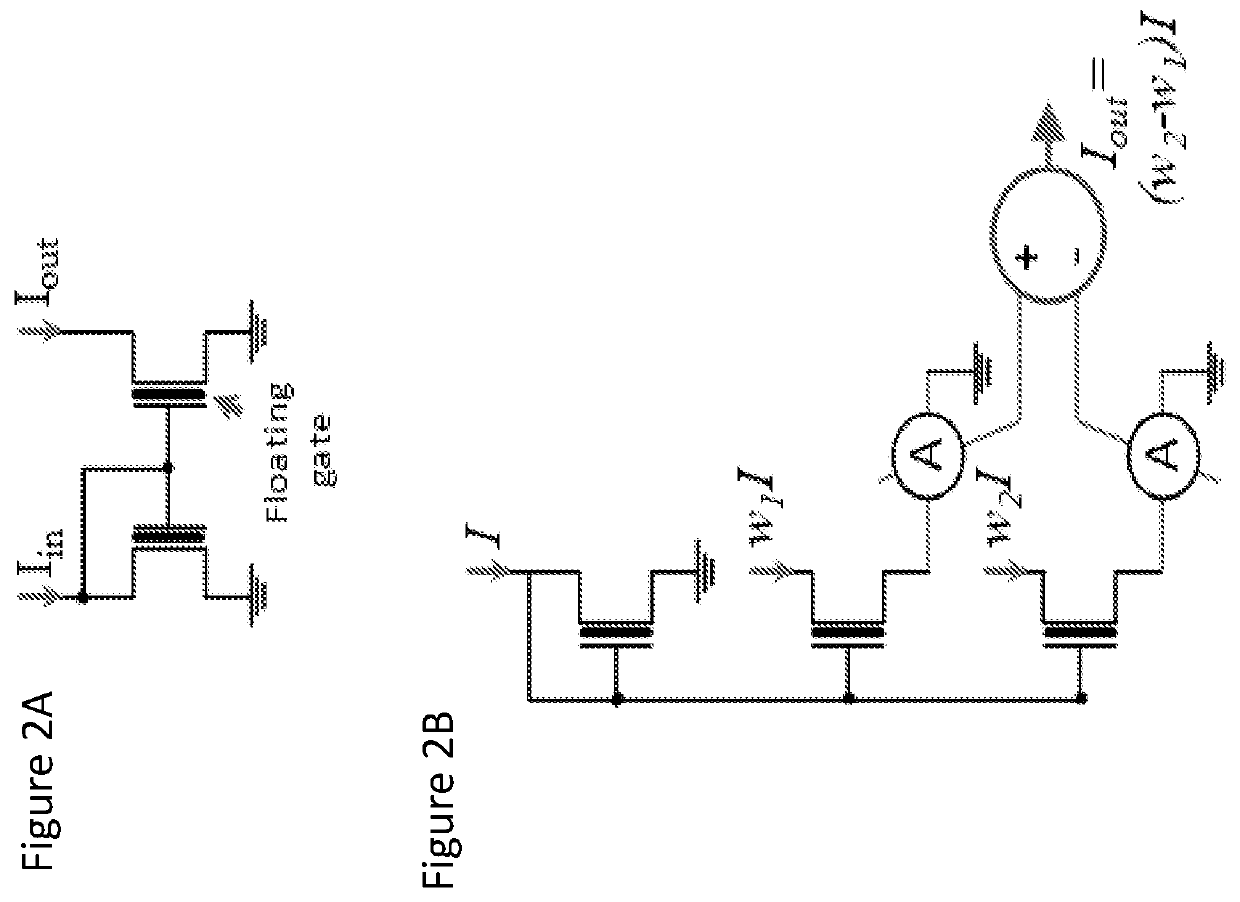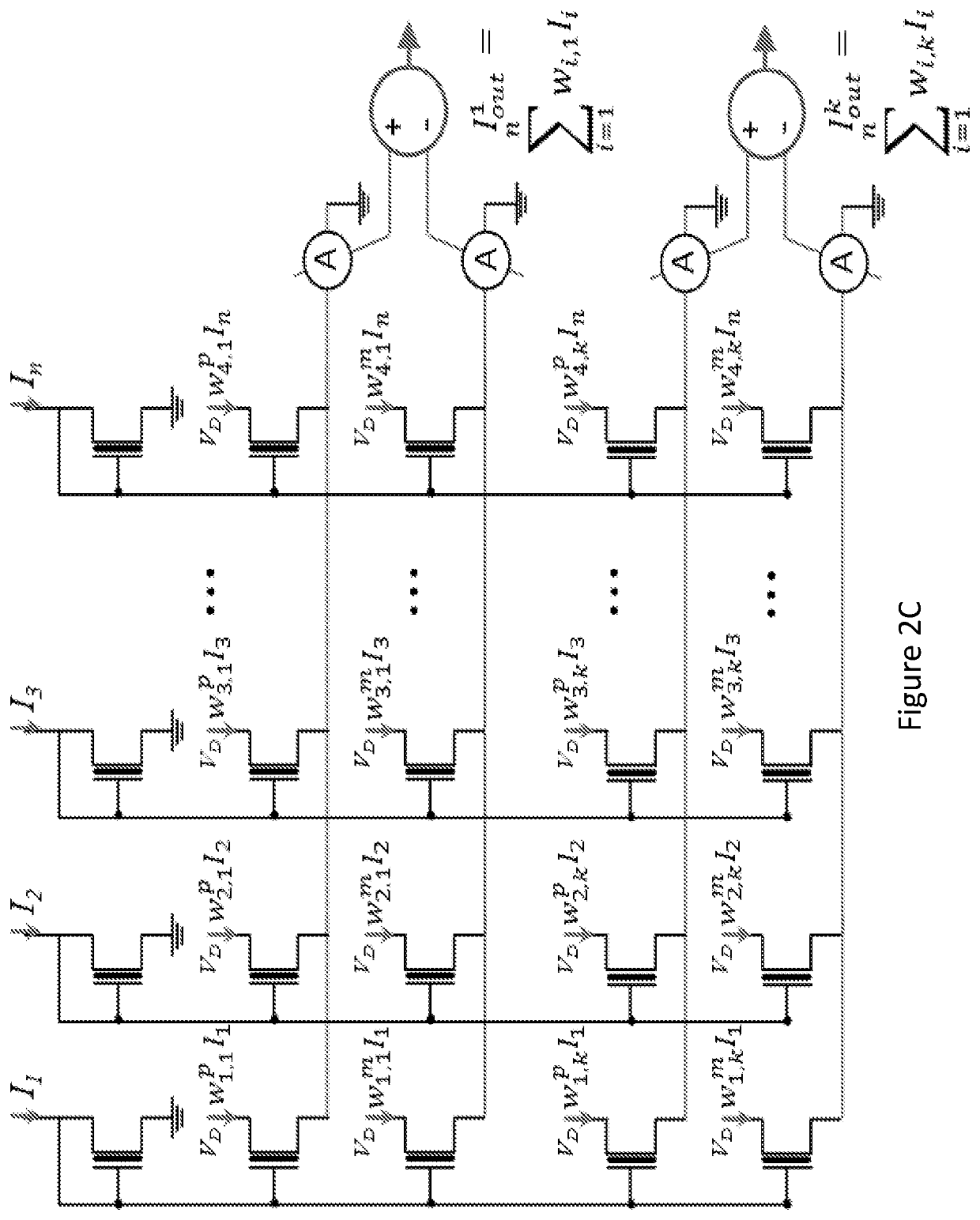Mixed signal neuromorphic computing with nonvolatile memory devices
a neuromorphic computing and mixed signal technology, applied in computing models, biological models, instruments, etc., can solve problems such as computational complexity, inability to achieve acceptable performance when implementing and inability to implement machine learning or deep neural networks in real-world applications. achieve the effect of higher density
- Summary
- Abstract
- Description
- Claims
- Application Information
AI Technical Summary
Benefits of technology
Problems solved by technology
Method used
Image
Examples
case example 1
[0192]a. Case Example 1
[0193]In the case example architecture illustrated in FIG. 31, each weight is implemented with a two or multi-terminal NVM devices in such a way that when the input is applied as a voltage to the device terminal, the current generated by a device will be a nonlinear function of input and their internal tuned state. Sine the currents of the NVM devices are unidirectional, in order to generate both positive and negative weights, each weight is implemented with two devices and the outputs are produced based on the currents of two adjacent rows.
[0194]The synaptic weights are nonlinear but neuron circuitry performs the linear operation of adding all currents. The feedback element of the opamp can be a linear (like a simple resistor) device and / or a nonlinear device (like a transistor). Application of the activation function after the neuron circuitry is optional since nonlinearity is achieved in the system through nonlinear weights and possibly using the nonlinear ...
case example 2
[0196]b. Case Example 2
[0197]FIG. 32 illustrates an example circuit wherein, in order to avoid implementing synaptic weights differentially by subtracting currents at neuron circuitry, the circuit also includes NVM devices in a configuration that sinks current instead of sourcing current. In other words, inputs are applied differentially rather than computing output differentially. In this case, each weight is again implemented differentially with two devices but one is biased in such a way that it will source current to the shared row, while the other device is biased to sink current from the shared row. Again, the neuron adds up the current and then transfers it linearly or nonlinearly (based on the used feedback element: resistor for linear and transistor for nonlinear) to voltage to be directly used as an input in the next layer of the neural network. The feedback element should be implemented such that it can handle both positive and negative currents.
[0198]For the case where t...
case example 3
[0204]c. Case Example 3
[0205]FIG. 33 illustrates a circuit variation of Example 1 but with a different neuron circuitry (the neuron is not adding up input currents anymore). In this architecture, neuron circuitry doesn't have any effect on the operation of the array and doesn't force any voltages to rows of the array (isolated). Instead, the neuron circuitry monitors the voltage on the rows and produces output proportional to that voltage (hence the rows of the array are somewhat left floating and their voltages will be determined only by the array). In this case, nonlinear synaptic weights are implemented with NVM devices operating in the nonlinear region all sourcing current proportional to their input and internal state and this current is routed to the ground or VSS through a pulling down resistor or another device like a transistor. In this case, flash transistors are trying to pull the voltage of the row up while the pull down device will try to pull the voltage down. Eventual...
PUM
 Login to view more
Login to view more Abstract
Description
Claims
Application Information
 Login to view more
Login to view more - R&D Engineer
- R&D Manager
- IP Professional
- Industry Leading Data Capabilities
- Powerful AI technology
- Patent DNA Extraction
Browse by: Latest US Patents, China's latest patents, Technical Efficacy Thesaurus, Application Domain, Technology Topic.
© 2024 PatSnap. All rights reserved.Legal|Privacy policy|Modern Slavery Act Transparency Statement|Sitemap



